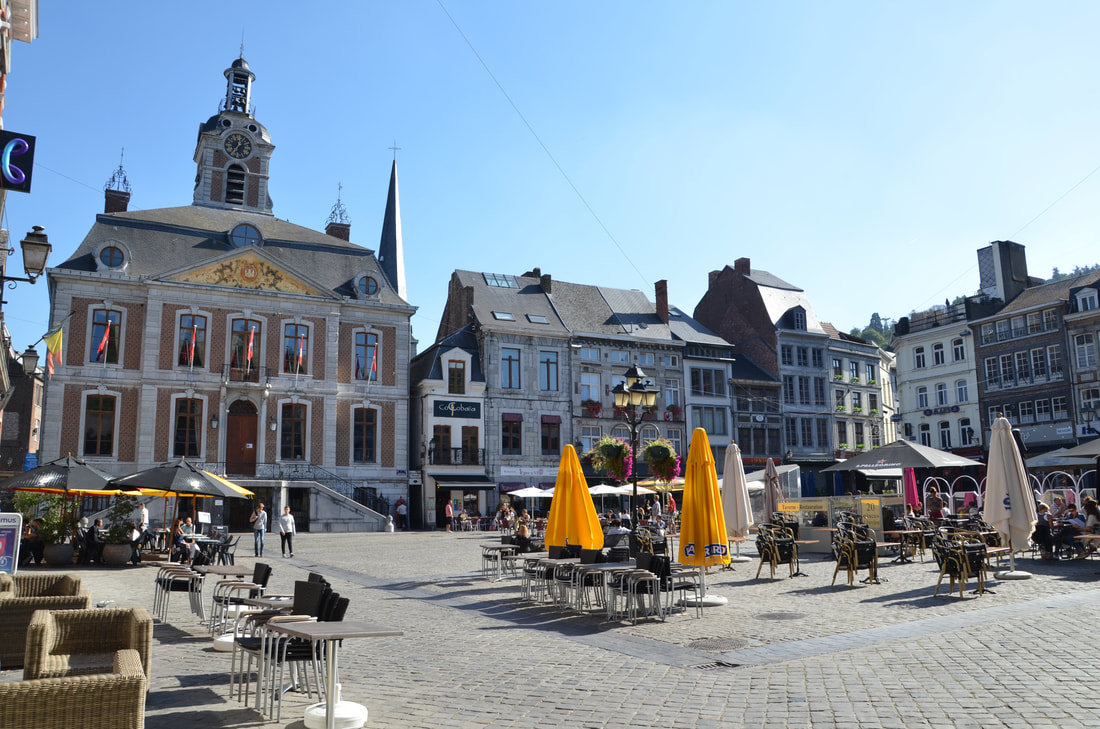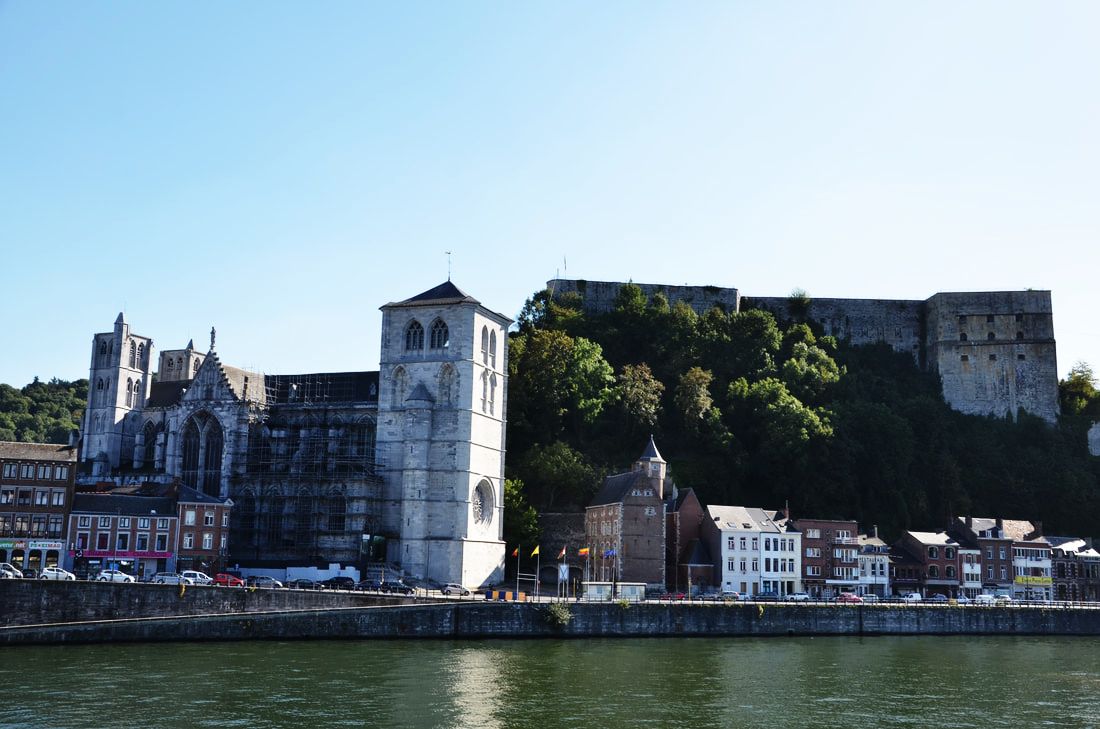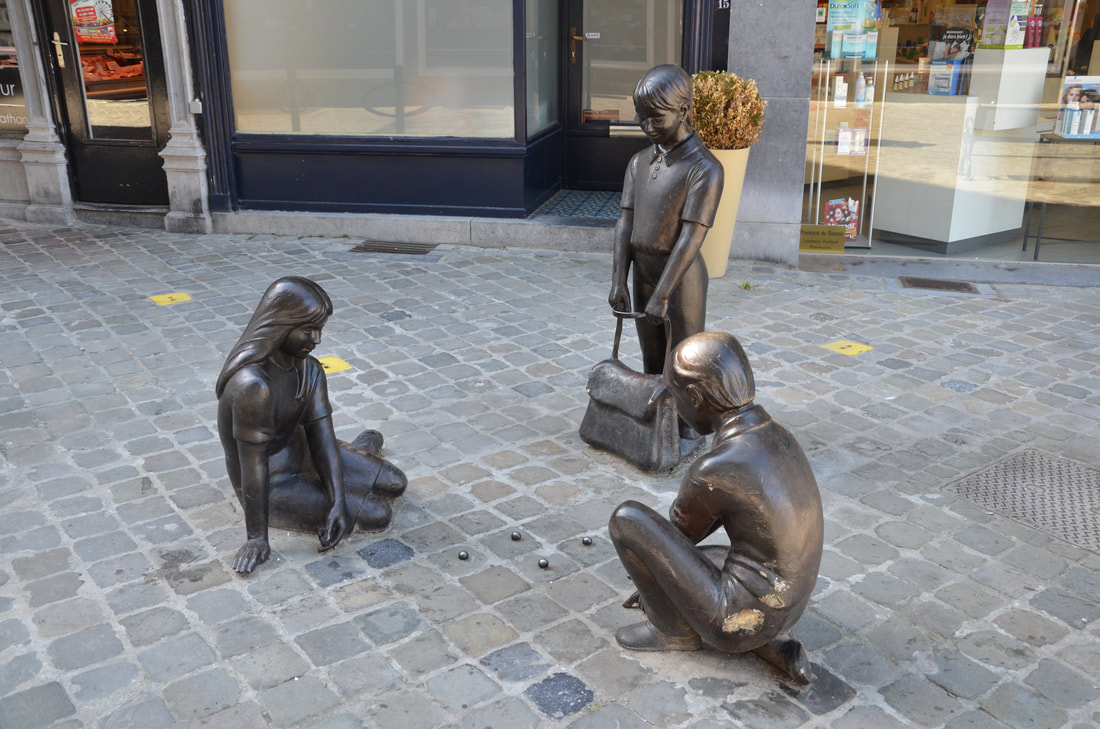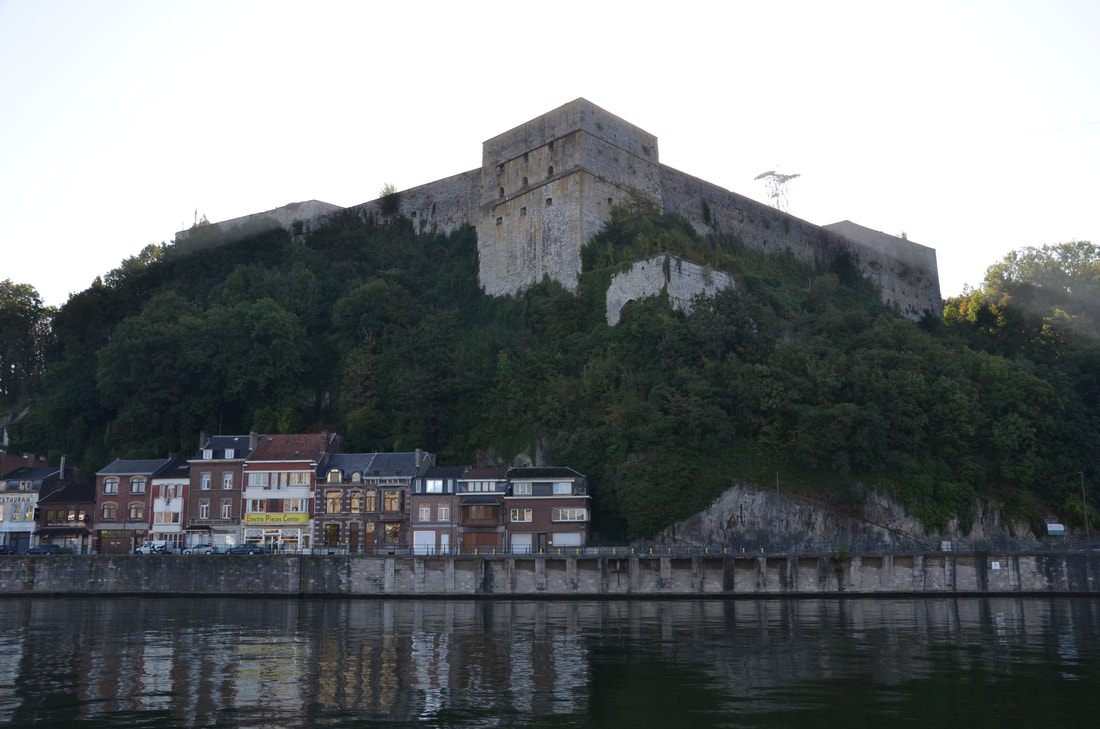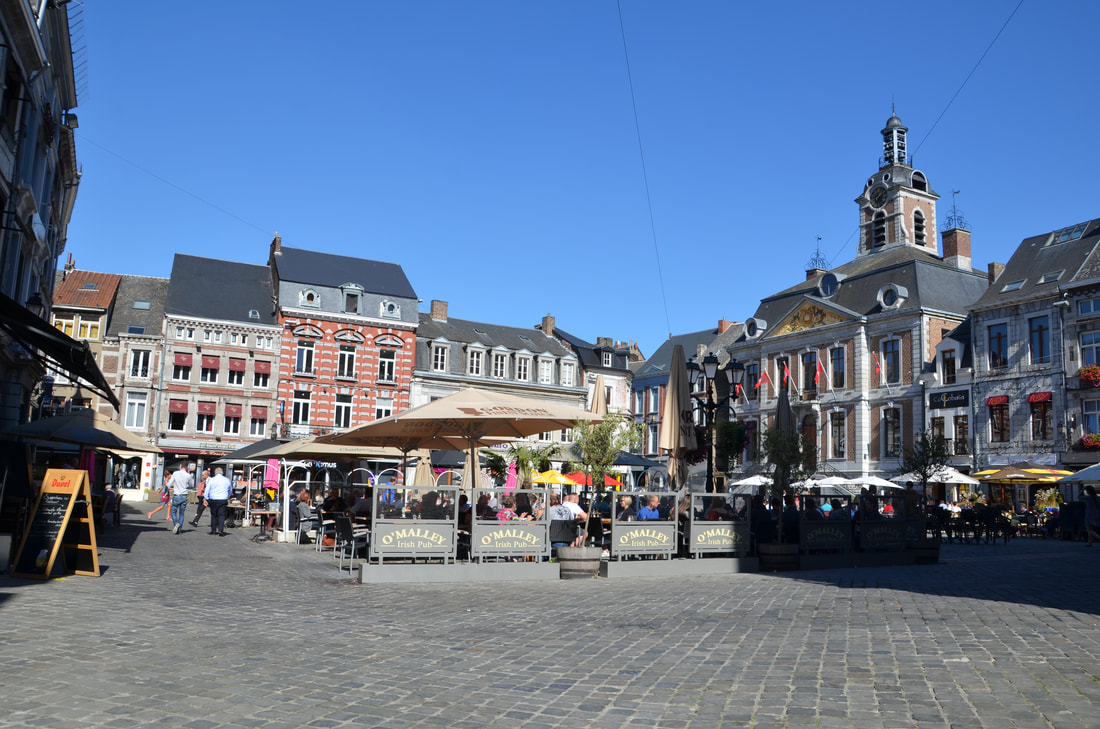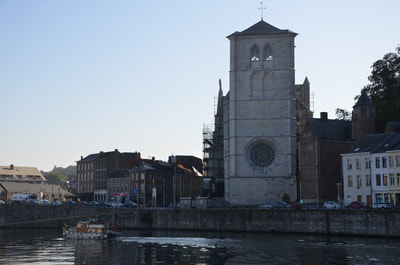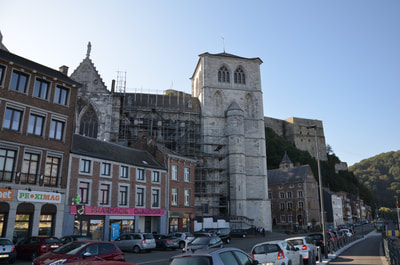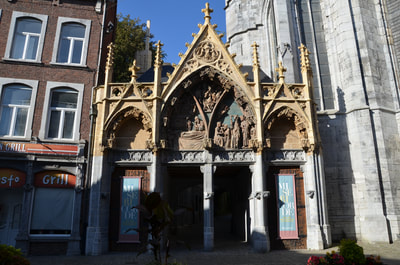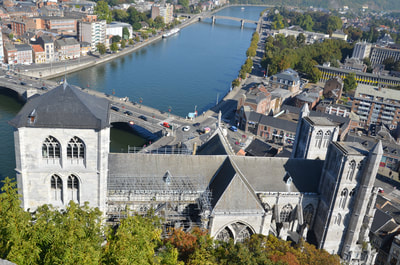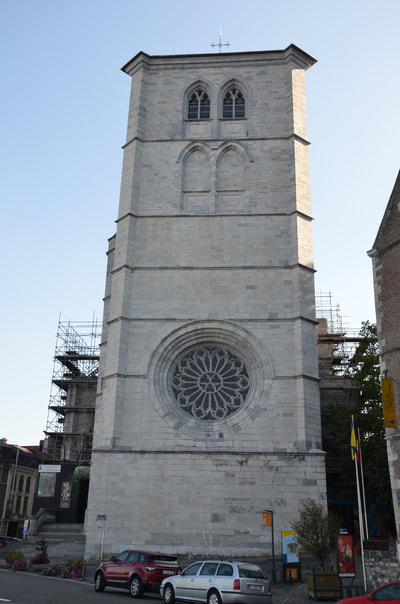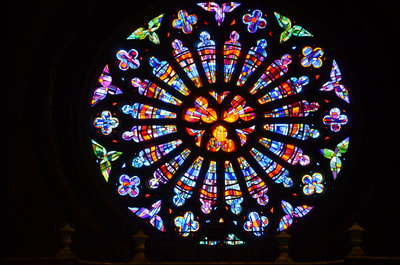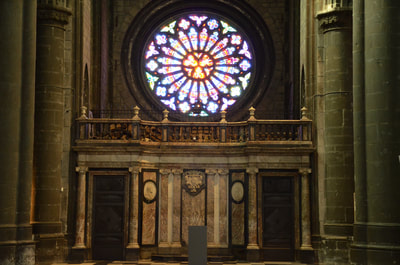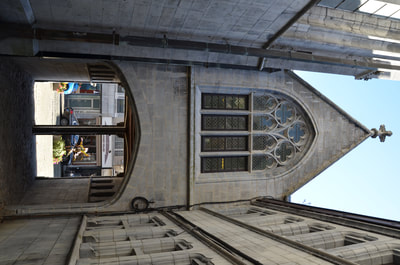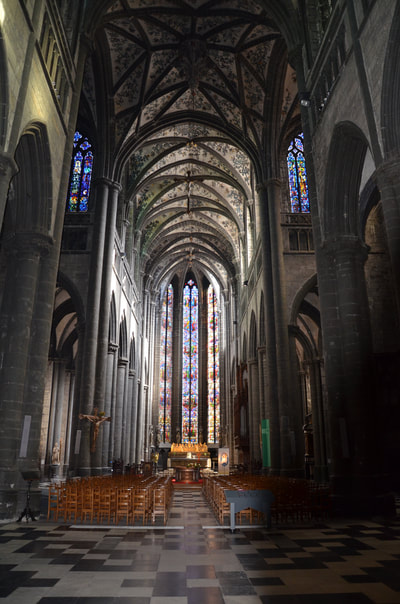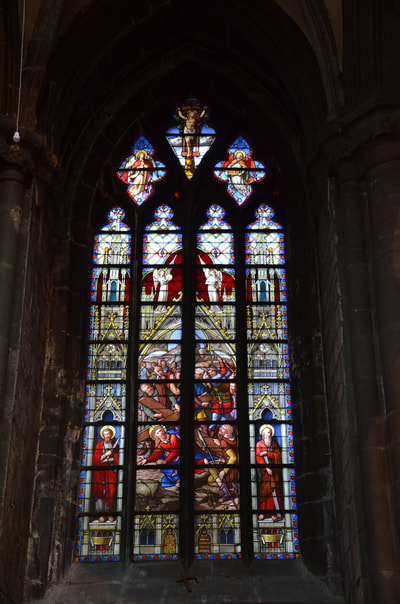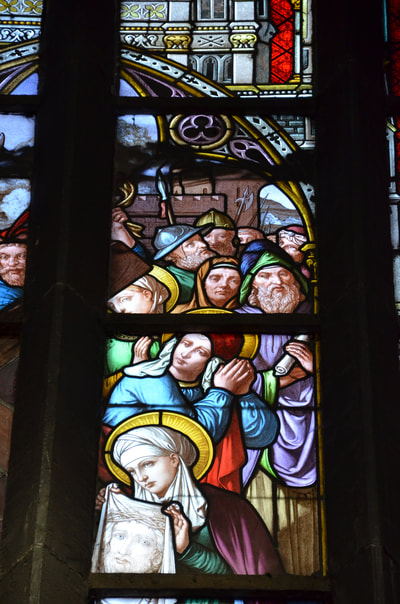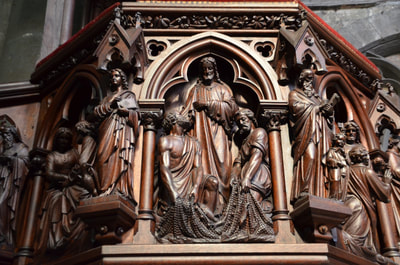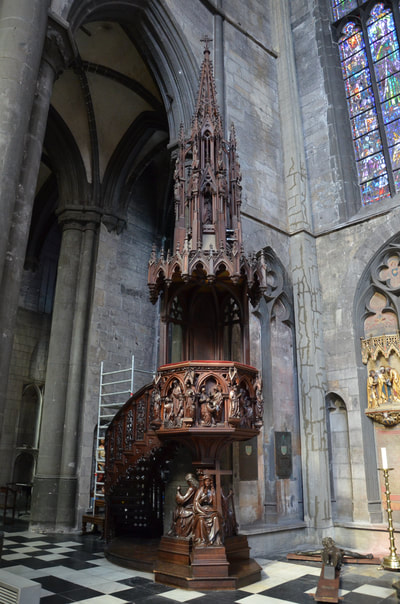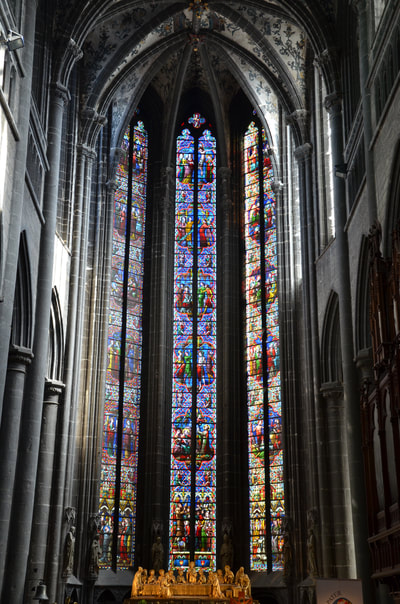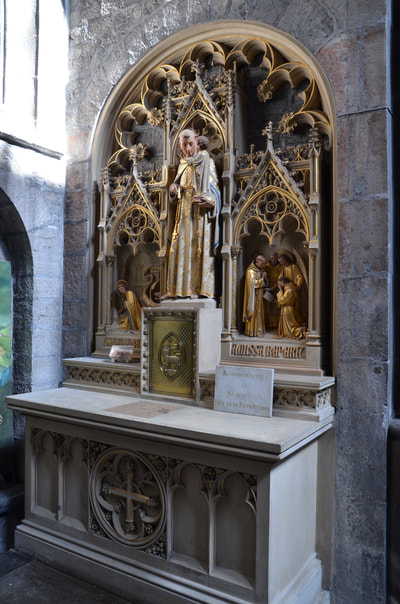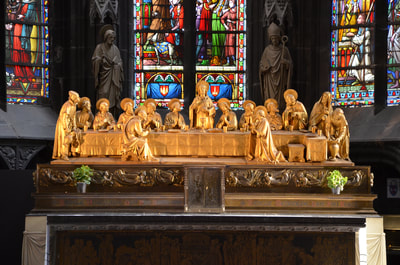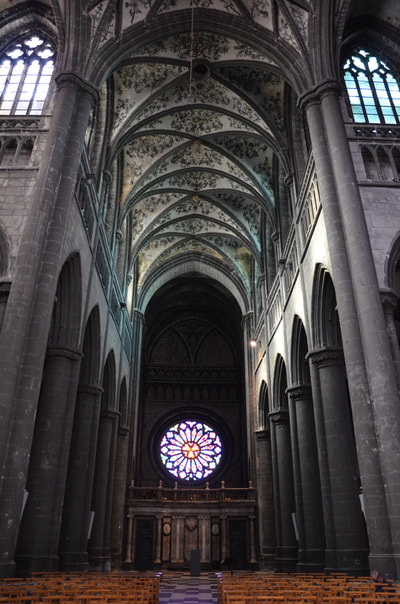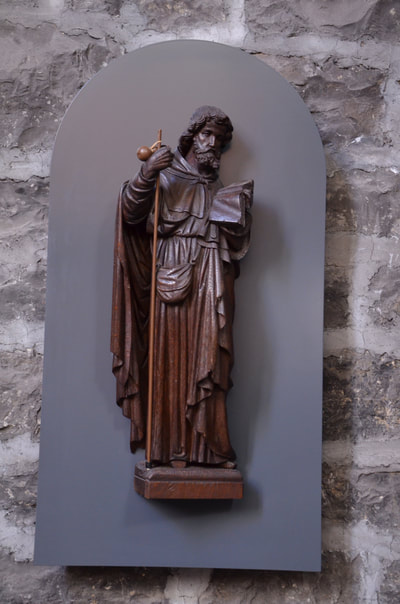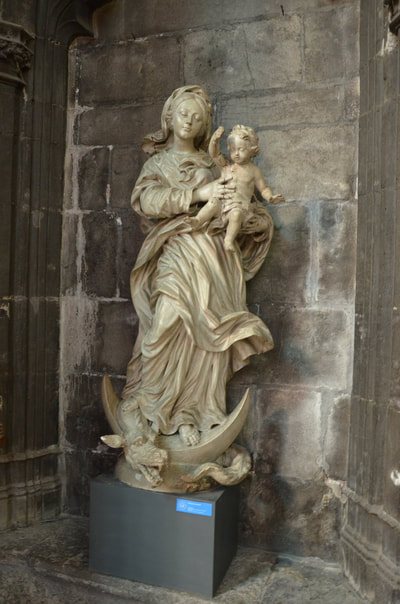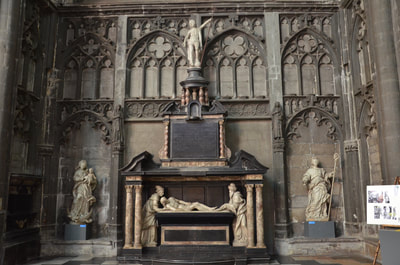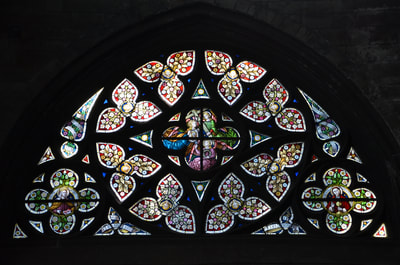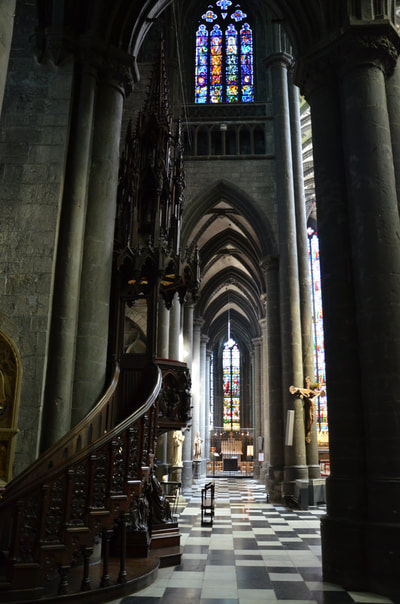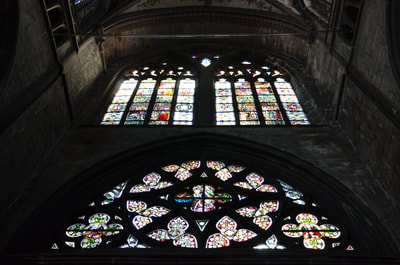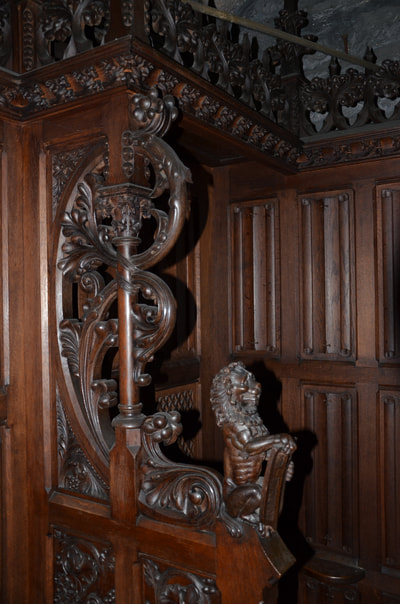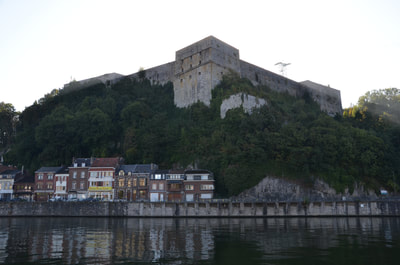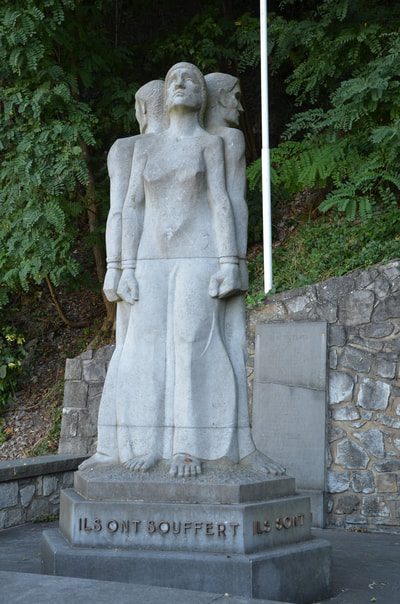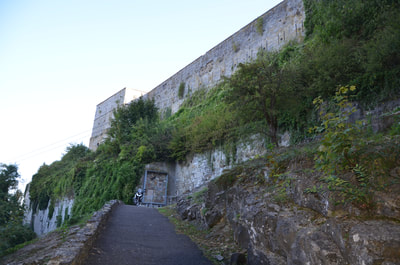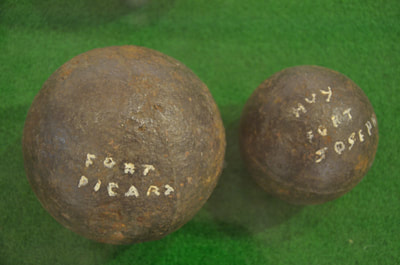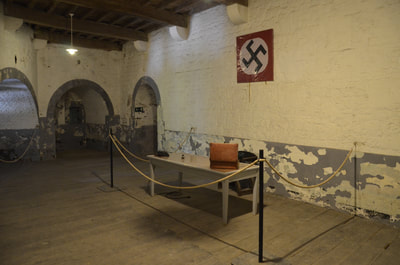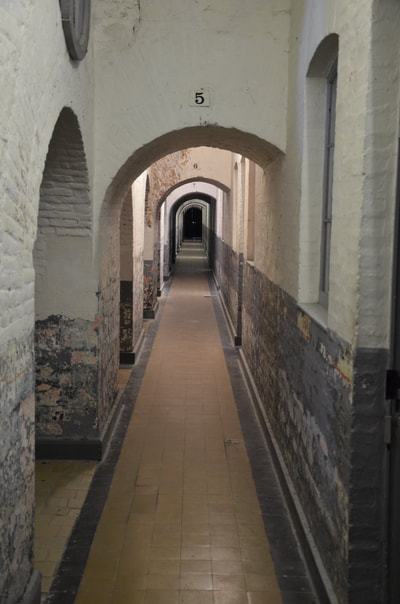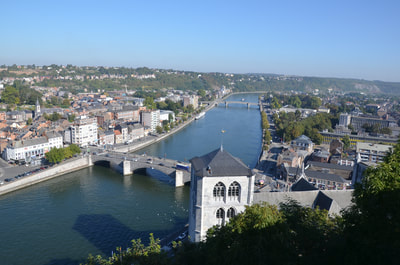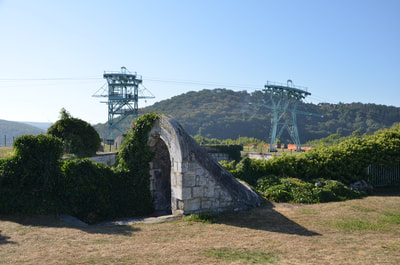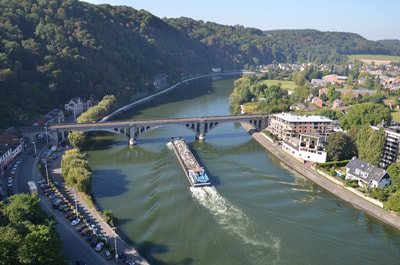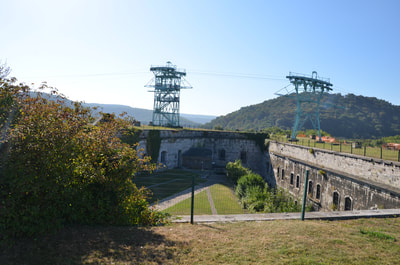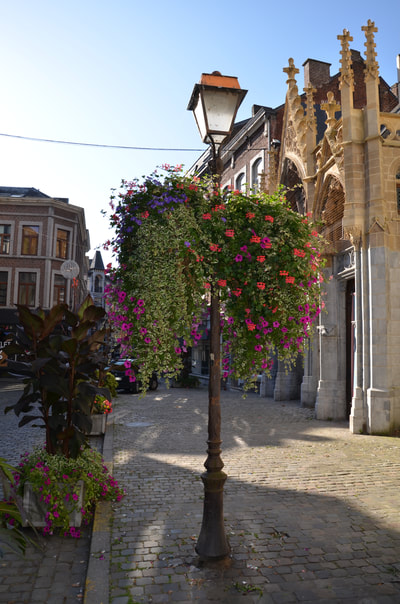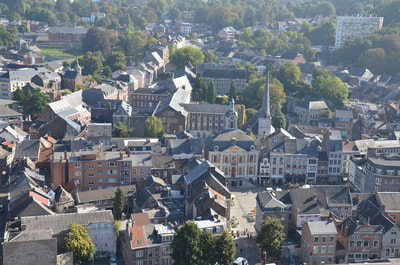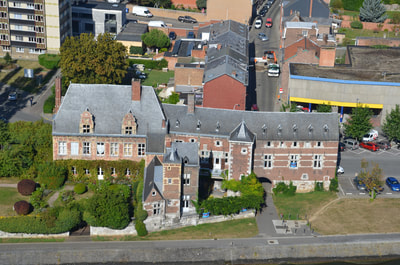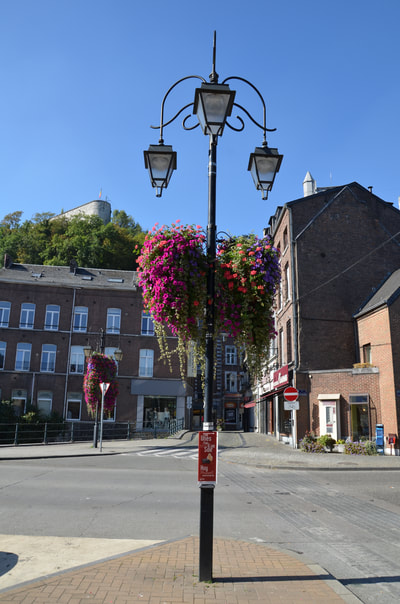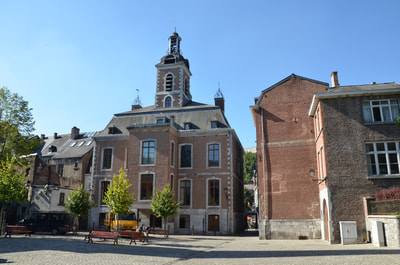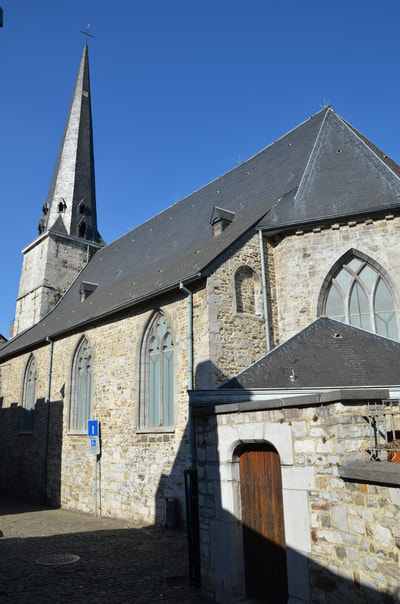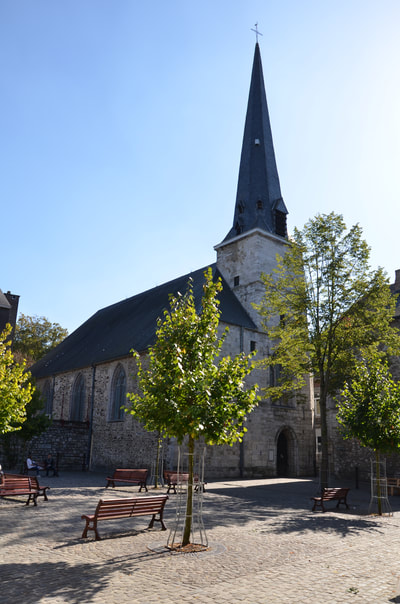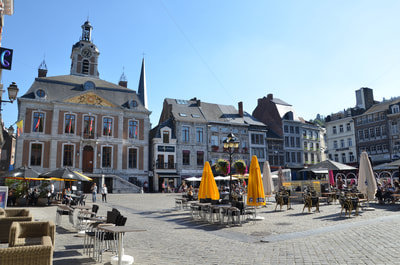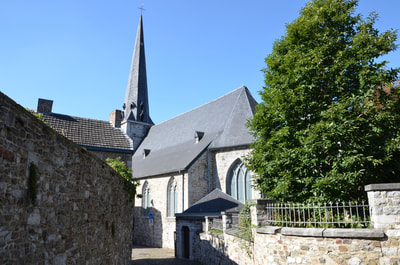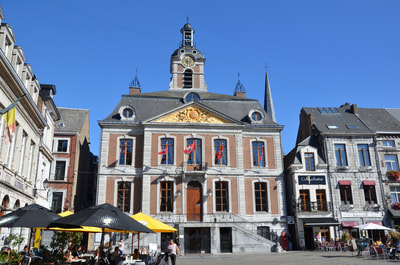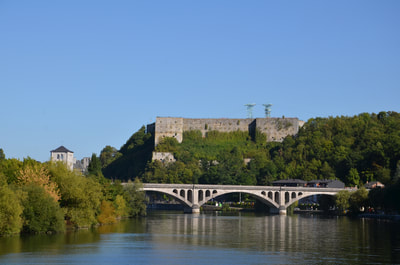Huy (Dutch Hoei)
|
vertical divider
is a small city in central-eastern Belgium, situated in the picturesque bend of the river Meuse. Because of its rich past, which makes it one of the oldest cities in Belgium, Huy is an important point on the tourist map of Wallonia. There are Gothic churches, Renaissance houses, the town hall, and a powerful 19th-century fortress dominates the city.
|
In 1066 the people of Huy receive the Freedom Charter, the first one north of the Alps
The first settlement was built during the Roman Empire, as a fort on the right bank of the Meuse River. In the 6th century, the villagers were evangelized by Saint Domitian, Bishop of Tongeren-Mastricht, who was elected the first saint patron of the city. From the 9th to the 11th century, Huy was one of the most prosperous cities located on the Meuse. His thriving economy was based on metallurgy, tanning, sculpturing, carpentry and winemaking.
In 890 Huy appears for the first time in official documents with his medieval fortress of Tchestia. In 943, King Otto I of Germany gives the city the status of a county. In 985 Huy became part of the principality-bishopric of Liege for more than eight centuries. In year 1066 the inhabitants received the Charter of Liberty from Prince-Bishop Liege-Theoudin, the first one north of the Alps.
In the 12th and 13th centuries, cloth production was the basis of Huy's economy. Because of its strategic location on the Meuse, the city was an arena of conflict between France, Germany, the Netherlands and the principality of Burgundy. One of the most spectacular events was the siege of the city in the 1689 year, during which about eight hundred houses were destroyed. In 1715 a year, residents frustrated by the constant struggle dismantled the castle of Tchestia. In 1818 a year, on the orders of William I, King of the Netherlands, a new fort was built, which became an arena of heavy fighting during both World Wars.
|
Collegiate of Blessed Virgin Mary |
vertical divider
Over the centuries, there were several churches in the place of today's collegiate church. Starting from the wooden, built in the fourth century, a sanctuary dedicated to Saint Materne. In the fifth century, the sanctuary of st. Agricole. In the year 558 in the city buried st. Domitian, Bishop of Tongeren, who was proclaimed the first Saint patron of the city.
|
In later years, the churches were rebuilt after massive fires. In the year 1060 bishop-prince Liege, Theodwin reconstructed the destroyed temple. This time, however church was built of stone, in the Romanesque style. In the year 1066, as a gratitude for the help in the extension of the temple, Bishop Theodwin gave the citizens of Huy Charter of Freedom, the first north of the Alps. To this day, under the collegiate church, there is a crypt from that church. In the year 1311 the reconstruction of the church in the Gothic style began, which slowly began to replace parts of the temple in the Romanesque style. In the 1377 year, the choir was consecrated, then the transept and the great western tower were handed over.
Na sklepieniu chóru widnieje data 1523. Dodano do niej słowo Rode pomiędzy dwoma skrzyżowanymi mieczami. Przypomina ono chrześcijański świat w czasie heroicznej obrony Wysp Rodos, obleganych przez Turków. Data 1536 umieszczona na sklepieniu, blisko wieży, to data ukończenia budowy. Data w transepcie, blisko chóru, rok 1810 to data restauracji sklepienia.
Wewnętrzne wymiary świątyni to: 72 m długości, 22.35 m szerokości w transepcie, w nawie głównej 9.5 m pomiędzy kolumnami i 22 m wysokość sklepienia.
Rozetowe okno tzw. Rondia w masywnej zachodniej wieży imponuje wymiarami. 6 metrów wewnętrznej średnicy i 9 metrów zewnętrznej. To największe okno rozetowe w stylu gotyckim w Walonii.
Trzy smukłe okna w absydzie wznoszą się na wysokość 20 metrów, ich witraże przedstawiają tajemnice Różańca Świętego. Malowany sufit to rzadkość w gotyckich kościołach. Czternaście witraży w dolnych partiach przedstawia miejsca, w których odpoczywał Jezus w drodze na Golgotę. Podobnie jak witraże z południowej części transeptu zostały wykonane w latach 1872-1878. Zniszczone podczas bombardowań z 1944 roku wielkie okno rozetowe zostało odrestaurowane w bardziej nowoczesnym stylu.
Wewnętrzne wymiary świątyni to: 72 m długości, 22.35 m szerokości w transepcie, w nawie głównej 9.5 m pomiędzy kolumnami i 22 m wysokość sklepienia.
Rozetowe okno tzw. Rondia w masywnej zachodniej wieży imponuje wymiarami. 6 metrów wewnętrznej średnicy i 9 metrów zewnętrznej. To największe okno rozetowe w stylu gotyckim w Walonii.
Trzy smukłe okna w absydzie wznoszą się na wysokość 20 metrów, ich witraże przedstawiają tajemnice Różańca Świętego. Malowany sufit to rzadkość w gotyckich kościołach. Czternaście witraży w dolnych partiach przedstawia miejsca, w których odpoczywał Jezus w drodze na Golgotę. Podobnie jak witraże z południowej części transeptu zostały wykonane w latach 1872-1878. Zniszczone podczas bombardowań z 1944 roku wielkie okno rozetowe zostało odrestaurowane w bardziej nowoczesnym stylu.
Collegiate has three towers. Western, the so-called Westbau, with a massive rose window rises to a height of 48 meters. In the northern tower there is a carillon with 49 bells, one of the most magnificent in Wallon. At the back of the church, attached to one of the towers, stands the gate of Bethlehem. The portal was created around 1340 a year in the shape of a tympanum. Placed over the ogival, decorated with canopy and figures. Two later ogives surrounding the portal were added in 1889-1890. Two arched sections share the tympanum. Below, on the left, the Virgin lying and holding the Child in her arms. At the top, on the left, the shepherds, below on the right adoration, at the top in the middle of the slaughter of innocents.
The main treasures of the collegiate church are four relics: Saint Mengold, Saint Domitian, relic of the virgin of the 1265 year and relic of Saint Marc from around 1200 year. Enamel medallion tree of life (1160-1170), table silver from Huy and Liege, and numerous sculptures and paintings.
The main treasures of the collegiate church are four relics: Saint Mengold, Saint Domitian, relic of the virgin of the 1265 year and relic of Saint Marc from around 1200 year. Enamel medallion tree of life (1160-1170), table silver from Huy and Liege, and numerous sculptures and paintings.
|
Address:
Rue de la Collegiale 4500 Huy |
Opening hours:
tuesday-sunday 10.00- 12.00 and 13.00 -18.00 (december-april to 16.00) |
Ticket price:
church: for free treasury: 3 Euro |
Citadel
Built by the Dutch in the years 1818-1823, in place of the existing here, until the 18th century, Tchestia castle. From May 1940 year to September 1944, the Germans organized a detainee camp here, in which about 7000 prisoners were kept. Nowadays, the citadel is a memorial dedicated to the Second World War and evidence of the existence of German concentration camps.
|
Address:
rue Vankeerberghen 20 4500 Huy |
Opening hours:
monday-sunday 11.00-18.00 |
Price:
3 Euro |
Main Market pełny uroczych restauracji i kawiarenek jest usytuowany w centrum Huy. Wokół placu znajdują się główne zabytki miasta. Ratusz miejski z 1766 roku został wybudowany w tradycyjnym dla regionu Liege stylu, fontanna Bassinia (1406 rok) to jeden z cudów Huy. Tuż za ratuszem znajduje się desakralizowany kościół św. Mengolda, powstały w XII wieku.
Spośród czterech cudów Huy przetrwały jedynie dwa, fontanna Li Bassinia z XV wieku oraz okno rozetowe w Kolegiacie NMP. Pozostałe cuda to zniszczony podczas II Wojny Światowej most na Mozie (Li Pontia) oraz zburzony przez mieszkańców zamek Tchestia. Inne ciekawe zabytki to dawny klasztor franciszkanów (obecnie siedziba muzeum miejskiego) oraz najstarszy budynek w mieście Maison Pres la Tour.
Co siedem lat (ostatnio 15 sierpnia 2012 roku) w mieście organizowana jest procesja religijna, która upamiętnia koniec suszy jaka nawidziła Huy w 1656 roku.
Spośród czterech cudów Huy przetrwały jedynie dwa, fontanna Li Bassinia z XV wieku oraz okno rozetowe w Kolegiacie NMP. Pozostałe cuda to zniszczony podczas II Wojny Światowej most na Mozie (Li Pontia) oraz zburzony przez mieszkańców zamek Tchestia. Inne ciekawe zabytki to dawny klasztor franciszkanów (obecnie siedziba muzeum miejskiego) oraz najstarszy budynek w mieście Maison Pres la Tour.
Co siedem lat (ostatnio 15 sierpnia 2012 roku) w mieście organizowana jest procesja religijna, która upamiętnia koniec suszy jaka nawidziła Huy w 1656 roku.
